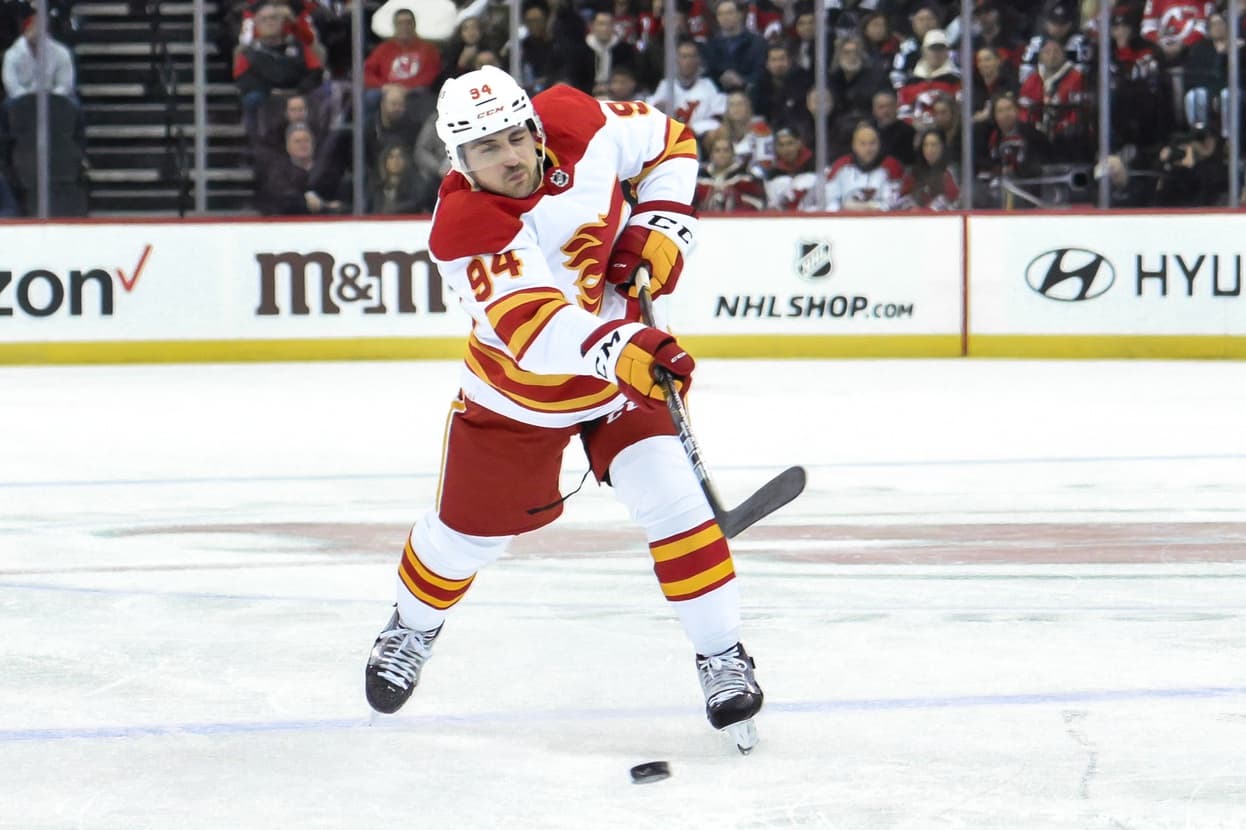Nation Sites
The Nation Network
FlamesNation has no direct affiliation to the Calgary Flames, Calgary Sports and Entertainment, NHL, or NHLPA
How is the Flames’ 2025-26 cap picture and roster shaping up?

Photo credit: John Jones-USA TODAY Sports
The Calgary Flames got ahead of some off-season work this past week, signing defender Brayden Pachal to a two year contract extension.
Pachal was one of a handful of pending restricted free agents on the Flames’ roster, and his re-signing starts to fill in some of the gaps within the club’s roster. The Flames have a lot of their big pieces signed for awhile, but key depth players like Pachal are a bit in flux right now.
With Pachal’s signing, here’s roughly how the Flames’ salary cap situation (and roster) are beginning to look for the 2025-26 campaign.
Flames with one-way deals for 2025-26
First, a disclaimer: a one-way deal means that a player gets paid the same amount whether they’re in the NHL or sent to the minors. However, players on one-way deals are usually the guys that teams feel most confident about playing in the NHL – which is why they’re signed to one-way deals in the first place. As such, looking at players on one-ways are our best method at estimating next season’s cap commitments.
The Flames have 15 players on one-way NHL contracts for 2025-26: two goaltenders, six defencemen and seven forwards.
- G Dustin Wolf – $850,000
- G Devin Cooley – $775,000
- D MacKenzie Weegar – $6.25 million
- D Rasmus Andersson – $4.55 million
- D Jake Bean – $1.75 million
- D Daniil Miromanov – $1.25 million
- D Brayden Pachal – $1.19 million
- D Ilya Solovyov – $775,000
- F Jonathan Huberdeau – $10.5 million
- F Nazem Kadri – $7 million
- F Yegor Sharangovich – $5.75 million
- F Blake Coleman – $4.9 million
- F Mikael Backlund – $4.5 million
- F Ryan Lomberg – $2 million
- F Martin Pospisil – $1 million
The Flames are also carrying $1.875 million of retained salary for Jacob Markstrom.
All-in, these likely cap commitments add up to just shy of $54.9 million. Under the current Collective Bargaining Agreement, the cap is expected to creep up by 5% per season, which would result in a cap ceiling in 2025-26 of around $92.5 million. (There is chatter that the NHL and the NHLPA could negotiate a higher number given how league revenues have grown, though.)
If we’re projecting conservatively and assuming it sticks at $92.5 million, then the Flames would have just over $37.6 million to fill eight roster spots – one defencemen and seven forwards.
Current Flames on expiring deals
The Flames have 10 pending restricted free agents and 13 pending unrestricted free agents under contract right now.
- Pending RFAs: Jakob Pelletier, Matt Coronato, Connor Zary, Rory Kerins, Adam Klapka, Sam Morton, Kevin Bahl, Jeremie Poirier, Yan Kuznetsov and Waltteri Ignatjew
- Pending UFAs: Andrei Kuzmenko, Anthony Mantha, Kevin Rooney, Walker Duehr, Justin Kirkland, Martin Frk, Clark Bishop, Dryden Hunt, Tyson Barrie, Joel Hanley, Jarred Tinordi, Jonathan Aspirot and Dan Vladar
In terms of current main roster players who are pending RFAs, and seem like contenders for the eight open roster spots, we would suggest that Pelletier, Coronato, Zary and Bahl seem like they’re good bets to return – albeit at raises from their current contracts.
We’ll have a better sense of potential contractual comparables for these pending RFAs in early 2025. Right now, their combined cap hits are $3.64 million. In the absence of better information, we’ll just assume that collectively they’ll double that amount as a placeholder.
A very early, guesswork lineup
Consider this put together in pencil, if that:
Huberdeau – Kadri – Pospisil
Sharangovich – Zary (RFA) – Pelletier (RFA)
Coleman – Backlund – Coronato (RFA)
Lomberg – TBA – TBA
Extras: TBA, TBA
Sharangovich – Zary (RFA) – Pelletier (RFA)
Coleman – Backlund – Coronato (RFA)
Lomberg – TBA – TBA
Extras: TBA, TBA
Bahl (RFA) – Andersson
Weegar – Miromanov
Bean – Pachal
Extra: Solovyov
Weegar – Miromanov
Bean – Pachal
Extra: Solovyov
Wolf
Cooley
Cooley
Combined, doubling the RFAs’ current cap hits, we’re looking at cap commitments of around $62.2 million with two goalies, seven defencemen and 10 forwards pencilled in, and four forward spots to fill. That leaves the Flames with about $30.3 million in available cap space.
That’s a gigantic amount of cap flexibility, and gives Craig Conroy and his staff a lot to work with going forward.
How do you think the Flames’ 2025-26 cap situation looks? How should they utilize all this cap flexibility? Let us know in the comments!
Breaking News
- Scotia Place: a street-level look at December construction progress
- Beyond the Boxscore: Flames come out swinging in big 6-3 win over Golden Knights
- Rasmus Andersson on remaining a Flame: ‘It takes two to tango’
- Ryan Lomberg’s big goal and big fight highlight Flames win over Vegas
- Instant Reaction: Flames overwhelm Vegas early, hold on for win
